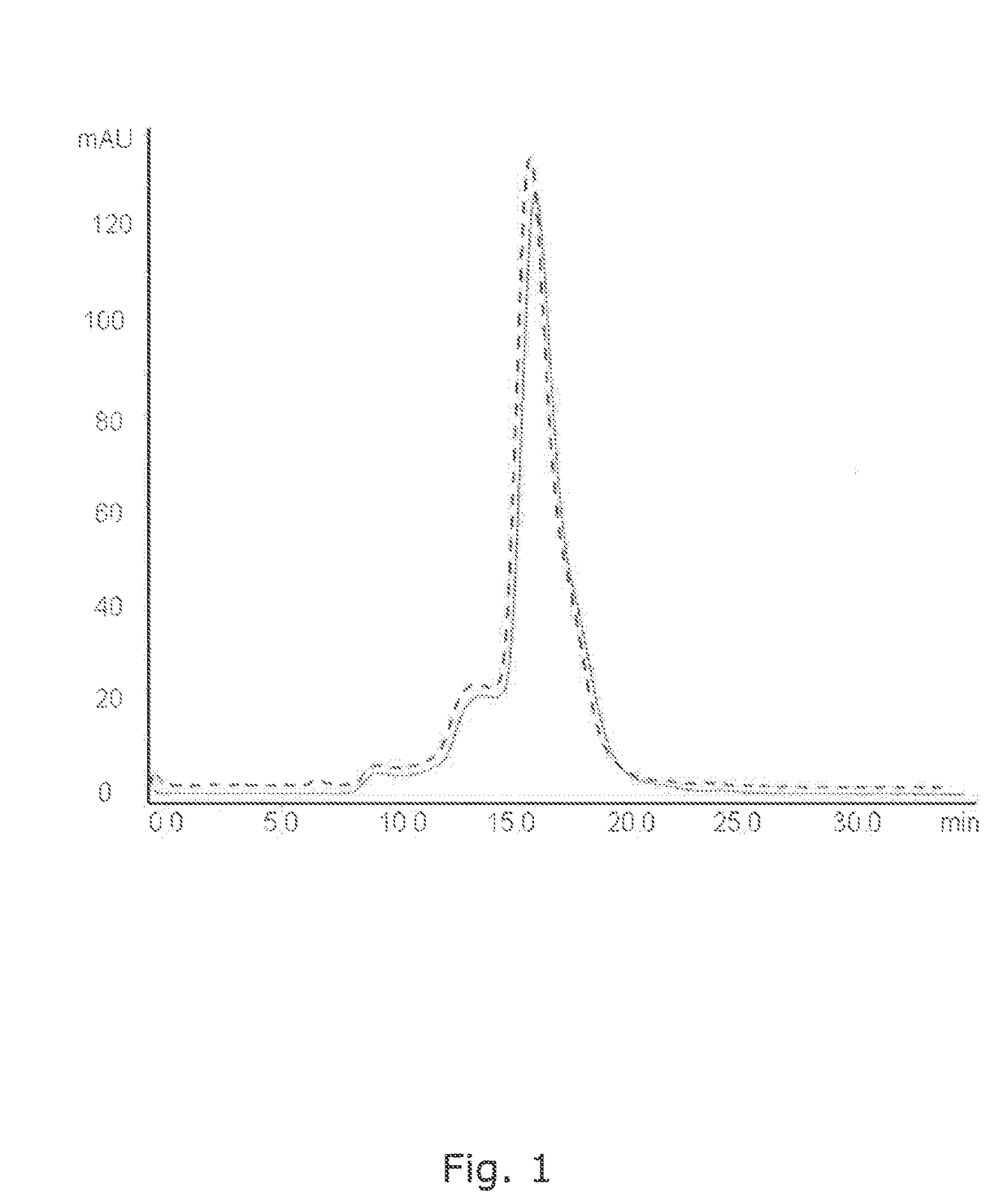Isolation of soluble proteins from aggregated casein-containing mixtures
a technology of aggregated casein and soluble proteins, which is applied in the field of separation of soluble proteins directly from aggregated casein-containing materials, can solve the problems of reducing the yield of soluble proteins, and increasing the impurities in aggregated casein precipitates, etc., and achieves high purity, high quality fractions, and high purity.
- Summary
- Abstract
- Description
- Claims
- Application Information
AI Technical Summary
Benefits of technology
Problems solved by technology
Method used
Image
Examples
example 1
[0228]Separation of beta-lactoglobulin directly from skimmed milk. The skimmed milk is non-pasteurised skimmed milk which has not been subjected to removal of casein.
[0229]Substantially all the soluble proteins in the skimmed milk are retained by the chromatographic support and aggregated casein, mineral, vitamin, carbohydrate and fat runs through the chromatographic support. The beta-lactoglobulin fraction is subsequently eluted from the chromatographic support and analysed.
[0230]The raw material used is skimmed milk obtained from raw milk (bovine), non-pasteurized, and collected from a local farmer. The cream was removed from the raw milk by centrifugation. The pH of the skimmed milk was pH 6.58 and without any pH adjustment (the natural pH of the milk).
Adsorbent
[0231]The adsorbent used was a mixed mode ligand, based on benzylamine.
[0232]The adsorbent is based on 5% agarose with 10% tungsten carbide particles incorporated, density of approximately 2.9 and particle size...
PUM
| Property | Measurement | Unit |
|---|---|---|
| mean particle size | aaaaa | aaaaa |
| mean particle size | aaaaa | aaaaa |
| mean particle size | aaaaa | aaaaa |
Abstract
Description
Claims
Application Information
 Login to View More
Login to View More - R&D
- Intellectual Property
- Life Sciences
- Materials
- Tech Scout
- Unparalleled Data Quality
- Higher Quality Content
- 60% Fewer Hallucinations
Browse by: Latest US Patents, China's latest patents, Technical Efficacy Thesaurus, Application Domain, Technology Topic, Popular Technical Reports.
© 2025 PatSnap. All rights reserved.Legal|Privacy policy|Modern Slavery Act Transparency Statement|Sitemap|About US| Contact US: help@patsnap.com

